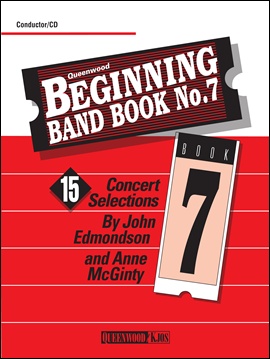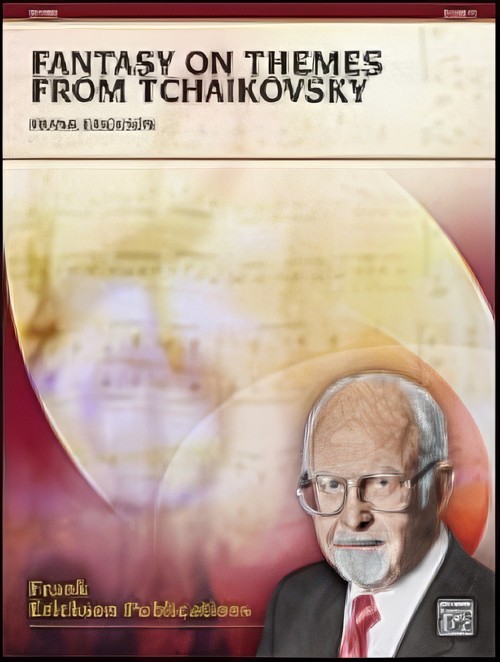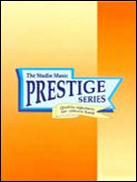Results
-
 £30.00
£30.00BEGINNING BAND BOOK No.7 (Score inc. CD) - Edmondson & McGinty
An affordable collection of concert repertoire for beginning bands; great sight reading material for more advanced bands! Features include: Grade 1 concert band music; Playable with only 1 flute, 2 clarinets, 1 alto saxophone, 2 cornets/trumpets and percussion, up to full instrumentation; Full, complete sound, even without bass clef instruments. The bass clef part in octaves is optional; Both clarinet parts stay below the break; Optional F Horn and Tenor Saxophone parts are written in their best ranges; Bell part for teaching melodic percussion. Contents: African Folk Trilogy; African Folk Trilogy #2; Chippewa Lullaby; The Golden Eagle March; Hymn and Hosanna; Join the Crowd; Kings, Kings, Kings; The Lost City; March of Freedom; Mystery of the Maya; Name Those Carols; Quicksilver Overture; Take Me Out to the Ball Game; Wellington Overture; Wolseys Wilde.
Estimated dispatch 7-14 working days
-
 £49.50
£49.50Emerald Cove (Concert Band - Score and Parts)
Keeping in mind all of the limitations of inexperienced musicians, this composer's talents for writing contemporary sounds, rich textures, and simple melodic material has produced an extremely accessible piece. "Symbol of Freedom" will satisfy the abilities, capture the interest, and most importantly, provide interesting musical material for young bands. Wonderful teaching piece!
Estimated dispatch 7-14 working days
-
 £89.99
£89.99Fanfare for the Champions (Concert Band - Score and Parts)
Fanfare for the Champions was commissioned by the municipal concert band of Landeck under the direction of Helmut Schmid on the occasion of the 375th anniversary of the band. The orchestra, which premiered Nostradamus (a key work of the composer), and which also commissioned Mantua - Freedom of the Eagle, has forged a friendship with the composer over a period of many years. This orchestra has participated in the major European competitions and has always performed with distinction--thus the title of the work Fanfare for the Champions.The fanfare, which is written in a style typical for the composer, should convey a feeling of happiness: the feeling to have created or accomplished something special. Don't resist that feeling! 02:05
Estimated dispatch 7-14 working days
-
 £54.95
£54.95FANTASY ON THEMES FROM TCHAIKOVSKY (Young Band) - Erickson, Frank
Tchaikovsky's musical progress was based upon impulse, rather than upon intellectual conviction. It was his sincere response to emotional impulse and the freedom with which he ranged over almost every field of musical creation which made him as great as he was. Frank Erickson passed away before he could provide rehearsal suggestions for this piece. This was one of his final numbers.
Estimated dispatch 7-14 working days
-
 £21.95
£21.95FORGOTTEN HEROES (Prestige Concert Band Extra Score) - Clarke, Nigel
Extra Score. This concert march emulates the type of march - overture which you might encounter in an epic war movie, and is, therefore, cinematic in style. A common phrase from veterans when discussing war service in interviews tells the younger generation 'never forget those that laid down their lives in the name of freedom'. The title of this march is a small contribution, from the composer, to keeping their memory alive. Performance time 5'06" (Recorded on QPRM150D CHIVALRY, Royal Northern College of Music Wind Orchestra)
Estimated dispatch 7-14 working days
-
 £107.95
£107.95FORGOTTEN HEROES (Prestige Concert Band Set) - Clarke, Nigel
Score and Parts. This concert march emulates the type of march - overture which you might encounter in an epic war movie, and is, therefore, cinematic in style. A common phrase from veterans when discussing war service in interviews tells the younger generation 'never forget those that laid down their lives in the name of freedom'. The title of this march is a small contribution, from the composer, to keeping their memory alive. Performance time 5'06" (Recorded on QPRM150D CHIVALRY, Royal Northern College of Music Wind Orchestra)
Estimated dispatch 7-14 working days
-
 £54.99
£54.99Here comes Bobby the Bear Wind Band Set (Score & Parts)
Rock music is always a success. And when it is supported verbally as it is done in this composition, the party can begin. Bobby is a friendly circus animal that has seen a lot of the world. There is nothing left to wish for and his freedom from worries radiates from this rock march by Andreas Ludwig Schulte. 01:45
Estimated dispatch 7-14 working days
-
 £169.99
£169.99Huckleberry Finn Suite (Concert Band - Score and Parts)
American author Mark Twain spent seven years writing Huckleberry Finn - the book Hemingway claimed is the basis for all American fiction. The story of Huck's and Jim's quest for freedom on a raft on the Mississippi provides a panoramic view of Southern society, which Twain saw as beset by greed, violence and coldhearted brutality in the guise of virtue. At the end of the book, Huck definitively abandons the hypocrisy and cant on which he has been raised when he makes the shocking decision to go to hell rather than betray his friend Jim and send him back to slavery. This suite portrays all the adventure of this great romantic novel and will delight performers and audience alike. 13:00
Estimated dispatch 7-14 working days
-
 £76.99
£76.99L?'ngstrump Samba Wind Band Set (Score & Parts)
The popular Swedish children's series Pippi L?ngstrump (Pippi Longstocking) is about an exceedingly strong and strong-willed little girl with red braids - who is the brainchild of Astrid Lindgren. This series has been broadcasted in many countries. I arranged its cheerful theme tune in samba style. Even with the new rhythm, the original song is still very recognizable. In the exuberant samba style, the percussion plays an important role. Within the L?ngstrump Samba, this is especially clear in the ad libitum percussion solo halfway through the arrangement. The solo can go on as long as desired, and offers plenty of freedom because of the free choice of the instruments used. 0:02:30
Estimated dispatch 7-14 working days
-
 £159.99
£159.99Mantua (Concert Band - Score and Parts)
The city of Mantua holds significant historical importance for the southern Italy's region of Tyrol. In this dramatic work Otto M Schwarz tells the tale of the Tyrolian freedom fighter Andreas Hofer who was executed in Mantua in 1809. The composer follows the life of this great folk hero, from his humble beginnings as an innkeeper to his death. This piece has all the energy of an exciting adventure movie - just without the pictures, of course! 14:00
Estimated dispatch 7-14 working days
